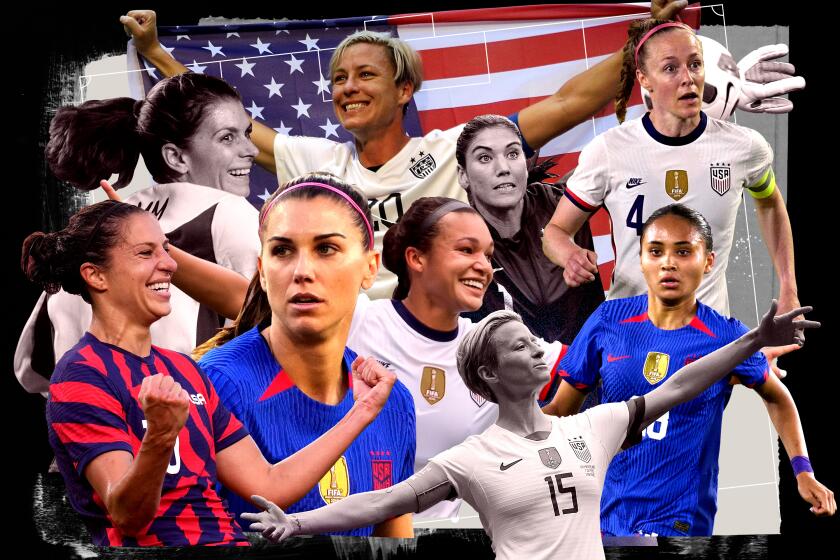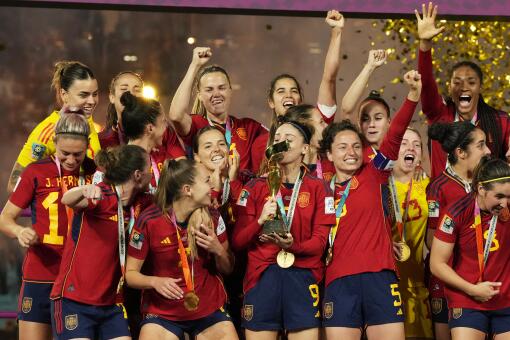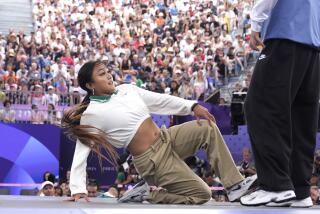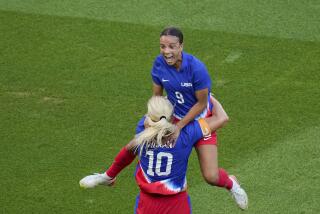USWNT hopes its record diverse World Cup roster will inspire next-gen stars
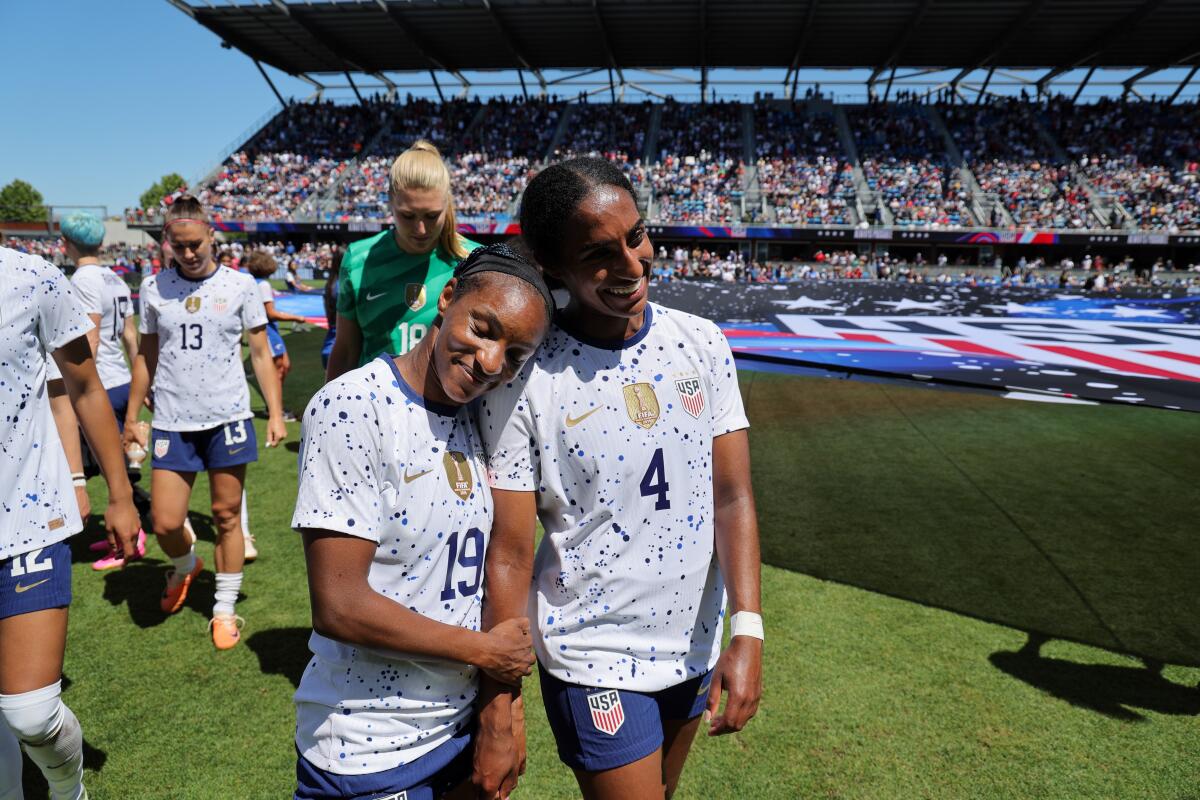
- Share via
SAN JOSÉ — As a child growing up just across the East River from Manhattan, Crystal Dunn played soccer. She didn’t have a lot of teammates — or opponents — who looked like her, however. Neither did Lynn Williams, who grew up in Central California, or Naomi Girma, who was born into an immigrant family in San José.
“It hasn’t been the easiest road, obviously,” said Dunn, one of two Black players on her club team, the Portland Thorns. “There were moments where I felt like I needed to conform to the environment and say ‘OK, let me tone down who I am.’ ”
That moment might have passed because the team the U.S. will field in this summer’s Women’s World Cup in Australia and New Zealand is the most diverse in history. The 23-player roster includes a record seven Black women and two Mexican Americans. There are three gay players and three others who became mothers since the last World Cup.
Ahead of the 2023 Women’s World Cup in Australia and New Zealand, we review the USWNT’s all-time greats and its up-and-coming stars.
Then there’s teenage forward Alyssa Thompson, who is a little bit of everything, with Black, Filipina, Peruvian and Italian heritage.
It’s a team that finally looks like the country it represents.
“It’s something our team takes a ton of pride in,” said forward Megan Rapinoe, who played in her first World Cup in 2011 on a team that had one Black and one Latino player. “One of the greatest strengths that this team has is that we are all different. And we celebrate that difference.”
It took a while to get there: From the first Women’s World Cup in 1991 through the 2020 Tokyo Olympics, the U.S. fielded just 19 Black and nine LGBTQ+ players on its world championship rosters, according to Kate Harman, a former college goalkeeper who studied gender dynamics and teaches courses on culture and identity within sport at New Jersey’s Rowan University.
The timing for the change couldn’t be better. This summer’s team includes three gay players — Kelley O’Hara, Kristie Mewis and Rapinoe — at a time when more anti-LBGTQ+ bills have been adopted in state legislatures than any year on record.
There are women who were born to immigrant parents playing for a naturalized-citizen coach, Vlatko Andonovski, at a time when the Department of Justice calls white nationalism a grave domestic threat and terms such as “inclusion” and “representation” have become targets of scorn.
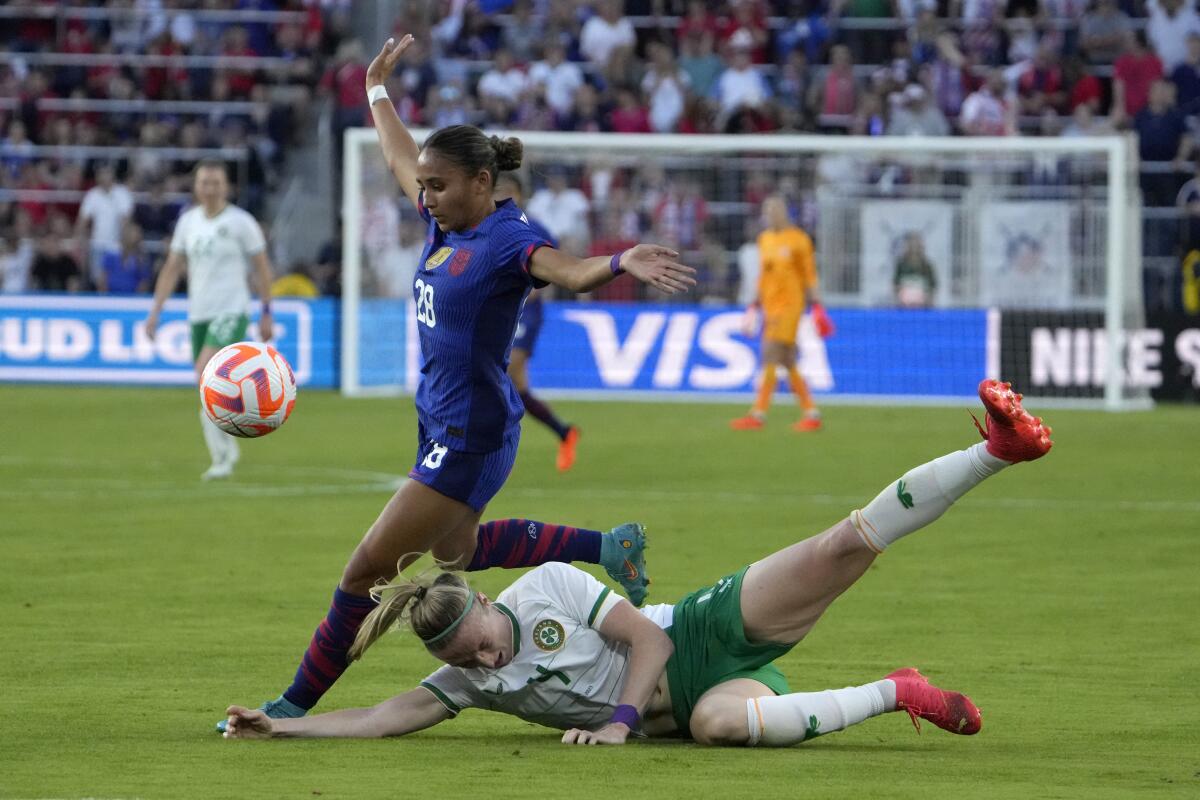
‘Our hope is that this group of diverse players really inspires the next generation of players, executives, coaches, referees from all backgrounds.’
— Cindy Parlow Cone, U.S. Soccer president
“There’s so many different layers to this. Professional soccer in the U.S. has always kind of been for white, middle-class suburban people. That’s kind of how it’s always been built and how it’s been promoted and how it’s been advertised,” said Harman, who considers herself a product of that system.
“For a really long time soccer was not accessible. Soccer, for the most part, is still really inaccessible to most groups in the U.S. unless you have money.”
That’s because while the sport, at its most basic level, requires little in the way of equipment, it can be exceedingly expensive for children to play at an elite level, where players or their parents must pay for uniforms, cleats, league registration and travel to tournaments or showcases.
In recent years the sport has made huge strides toward turning that around in urban and poor communities. That in turn has produced a more diverse pool of players, a shift U.S. Soccer both has supported and benefited from, said Cindy Parlow Cone, the federation’s president and a member of two World Cup teams.
But it remains a work in progress.
“We still have a lot of work to make sure that every player, regardless of their background of where they live, have the opportunity and access to play our sport,” Cone said. “That’s not true still in the U.S. And so that’s one thing that we as a federation are going to be working to really grow this game and increase the access to our game, so that not only our national teams, but every team across the country reflects the diversity of our country.”
“Our hope,” she added, “is that this group of diverse players really inspires the next generation of players, executives, coaches, referees from all backgrounds.”
For Dunn, who at 31 is in her 11th year with the national team, both the access and the example are important.
“More awareness of the sport in minority neighborhoods is something I’ve always been backing, because having access to the sport at a young age is ultimately what allows women of color to stay in the game,” she said. “There’s an amazing moment right now in the women’s game. I know that I struggled with feeling like I have this place of belonging. When I look around and see all the women of color on the team, it’s a beautiful thing and it’s something that I fought long and hard for.”
That fight smoothed the path for players such as Sophia Smith, 22, the youngest most valuable player in National Women’s Soccer League history; Girma, 23, the daughter of Ethiopian immigrants; and former UCLA standout Ashley Sanchez, one of just three Mexican Americans to make a U.S. women’s World Cup team. Two qualified this summer.
“It is a big deal,” Sanchez said. “But I hope that this won’t be a conversation at some point. It just will be the usual.”
Times staff writer Helene Elliott contributed to this report.

